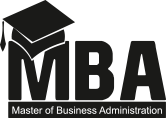Consulting
By Vincent Schiano
I specialize in small business consultation. I offer a 15-minute introduction call for free! Let me help you take your business to the next level! If you want to be more profitable, more efficient, and have more free time, schedule sometime today.



Entrepreneurship in the US
Despite the wealth of entrepreneurship in the U.S, the road of a small business owner isn’t easy. Unfortunately, 18 percent of businesses fail within their first year, 50 percent after five years and 65 percent by year 10, according to the Bureau of Labor Statistics.
We all know these stats in their general form, especially if you are a serial entrepreneur like me, but what does this mean for your existing business? Do you constantly feel like you are trying to outrun the bear? Well, I have great news for you. There are significant hurdles and milestones you can focus on within your business that drastically reduce these attrition statistics.
For example, when you look at what percentage of businesses fail that have a million dollars in revenue, the risk is significantly smaller. You see it doesn’t have anything to do with the amount of time the business has been operating, it has everything to do with hitting scale and viable revenue. There are so many tactics that can be implemented in small businesses to hit growth hurdles to give you scale and viability, but too often these aren’t put into place from the beginning and when businesses reach a certain growth point ownership has to go through the painstaking processes to backfill these implementations.
For example, and this is a big one, documenting simple processes in extreme detail, sounds terribly obvious, but you would be surprised how many business I work with that do not have a single documented process in place.
Take for example, a landscaping company that I worked with not to long ago. These businesses are often built out of one truck and trailer by the owner, but growth is dependent on developing additional talent. It isn’t often something that is thought about in the beginning, but a brand and policies are being developed from day one. The owner hires another person and puts another truck and trailer on the road, and then another person, and then another, and every time he does that the need for defined practices and procedures is greater and greater, but the operator is spread more and more thin with each phase of growth.
What happens if one trailer gets a flat, and another crew doesn’t show up? Are there contingencies in place for this?
This metaphor can carry through to any small business and the complications and ramifications for a lack of defined operating procedures only becomes greater for larger companies.
In this case, we found technology to incorporate into the business that allowed the company owner to come off the road and focus on the strategic vision for his business. We identified dozens of strategic gaps that needed to be addressed. Staffing, finance and insurance, business development, and we built procedures for them all. And that brings me to one of the core pillars of our small business consulting model; process.
YOU CAN’T MANAGE WHAT
YOU DON’T MEASURE
Sure, I will admit it. I am a nerd, actually, a super nerd with a six-sigma greenbelt, but imagine for a second, baseball without sabermetrics, football without a playbook, or golfers without yardage measurements.
With the integration of technology, we can provide metrics for any aspect of a business, which allows the decision makers to be more informed and spread less thin. The best part is that in today’s day in age, it is a rarity that a business needs to develop any technology from scratch. If there is a need the marketplace has usually already provided it, and implementation is relatively easy.
So, what does all this mean?



It means that over 10 years as a serial entrepreneur with experience in consulting with businesses ranging from the fortune 100 to mom-and-pop small businesses I have identified two significant revenue hurdles that typically have large implications for the small business owner.
The first is when the company exceeds one million in revenue, and the second is when the company crosses the five million in revenue threshold. Why is this noteworthy for small businesses?
Well first off, let me acknowledge that the number one thing most business owners in these categories chase is their own time. They have worked so hard to get the business to this point that, in a lot of cases, they have compromised a lot, and they begin to think about converting some of their sweat equity back into time. And second, each of these two hurdles provides a statistical drop off in the risk of backslide in the companies momentum, which usually lends to peace of mind for the business owner to further invest in buying back their time and enjoying the fruits of their labor.
At one million in revenue, the company should begin to truly examine the scale and efficiency of their operation. This really should begin as the company is trending to cross this threshold, and that marker can be different for different industries and companies, but as a good rule of thumb it should become a regular conversation for ownership around the $750k revenue mark. At least, this is a good time to project when the company could cross the million-dollar revenue threshold and start to look at operational efficiency.
If completed properly, this can create habits that should exist throughout the life of the company. Tactics such as developing Key Performance Indicators (KPIs). While these KPIs will change as your organization evolves, the practice of looking at your strategy and identifying markers for goal setting should be common place.
But let’s pause here…..this isn’t to say that if you haven’t done this and you are well past the one million dollar revenue tier that you are walking around with an anvil over your head.
It is just to say that all businesses at some point reach the limitations of the infrastructure in which they operate. It is our job to help you identify those limitations, and if you chose, give you the play book to remove them for future growth.
With experience, in both organic and inorganic growth strategies, I believe that this is the biggest consideration in a transition from the one million to five million dollar revenue tier. Business owners have spent so much time building their client base from “scratch” organically in the startup phase that it is easy to forget that there is another lever that can be pulled to grow your business. Acquisition.
The time may be before the 1 million dollar revenue tier or after, but the point is that as the companies infrastructure grows so does its capacity for inorganic growth, or vertical integration.
Take for example a wealth management company. This company is a fee-based investment management company that had around 10 employees and was doing $1.9 million in revenue. In this space, it is common practice to begin to look to acquire other books of clients from retiring financial advisors without a legacy plan, but what we kept noticing was that the cost of these businesses was trading around 2.5 or 3 times revenue. This was a concern and began to consider other methods for acquisition to grow. Looking at other financial services that client’s needed but weren’t being provided, a short list of estate planning firms, and accounting firms were made. What did we learn?
Accounting firms seemed particularly attractive for two reasons. Across the market, accounting firms were trading at a much lower multiple. (1 times revenue). And it would allow vertical integration in the current business and both organic and inorganic growth. The clients from the wealth management firm could be referred to the accounting firm and vice versa. This proved to be an extremely valuable growth strategy for the next five years, that allowed significant scale and market penetration. All of which were built on the existing infrastructure of the first wealth management firm.
Which brings me to the five-million-dollar revenue tier…
As I have stated before, these are just generic rules of thumb but usually in some capacity once an organization has crossed the $5million revenue tier the ownership has transitioned into a strategic role or hired someone to fill that position/positions. The actual structure of the business entity has been put through legal review, strong financial relationship are in place, and operational metrics have been established. Consultation in this space becomes slightly more sophisticated and is largely driven by ownership goals for the organization. Whether those goals are to be acquired and transition into the next chapter, to set new KPIs for growth to new markets, or even a more acute consulting engagement within a specific challenge the organization is facing, the process is the same.
Define the Scope of the engagement.
Gather data.
Deliver recommendations.
Implementation and controls.
I specialize in small business consultation.
I offer a 15-minute introduction call for free! Let me help you take your business to the next level! If you want to be more profitable, more efficient, and have more free time, schedule sometime today





